Creating a Sensory Friendly Playroom
Post by Julia of Tag&Tibby
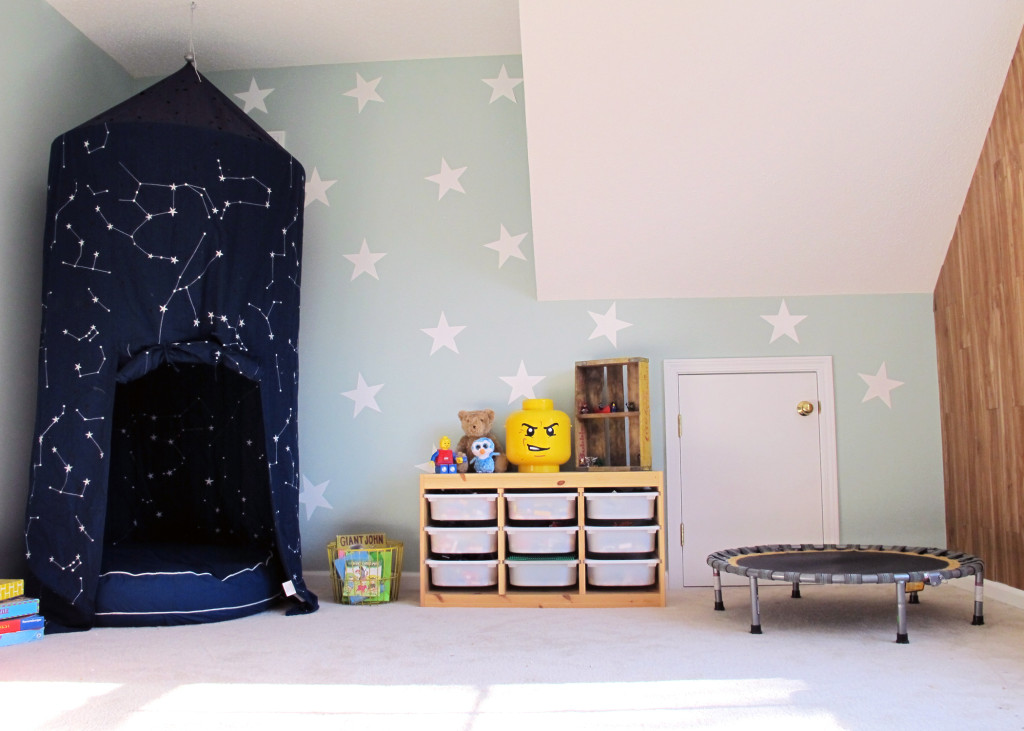 Last summer we moved to our new home in North Carolina. Our previous home in Minnesota was small: our two children shared a bedroom and playtime happened mostly in the living room. Now that we have a playroom and I wanted to make it more personal for our children’s’ needs!
Last summer we moved to our new home in North Carolina. Our previous home in Minnesota was small: our two children shared a bedroom and playtime happened mostly in the living room. Now that we have a playroom and I wanted to make it more personal for our children’s’ needs!
Our oldest is on the autism spectrum. He is high functioning, processes information visually, and loves routine. He is very social but at times during the day needs a quiet space to be alone. Both of our children are fun loving and silly, and I wanted to make our playroom a safe, comfortable environment for both of them to play.
I contacted Land of Nod to see if they would be interested in helping me add some sensory friendly components to the room. They graciously sent the Planetarium Playhouse Canopy. Our little guy is always asking questions about science and the weather and I knew it would be a hit. Our kids now have a soft place to sit and read, and it is the perfect spot to have a little alone time or be silly with their finger flashlights.
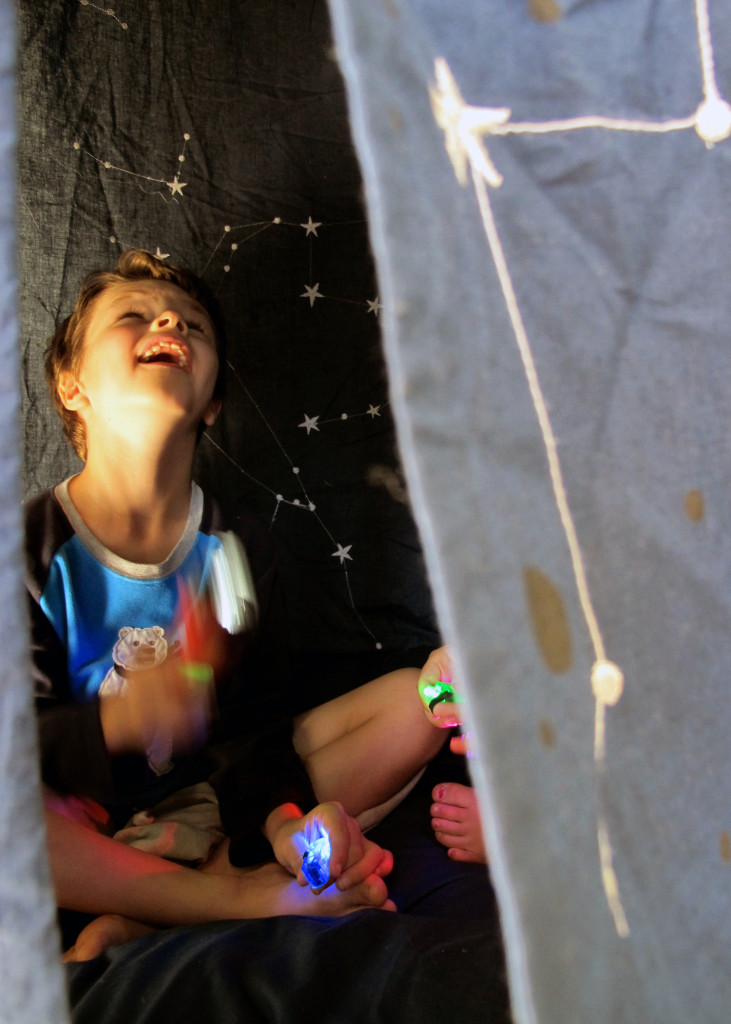
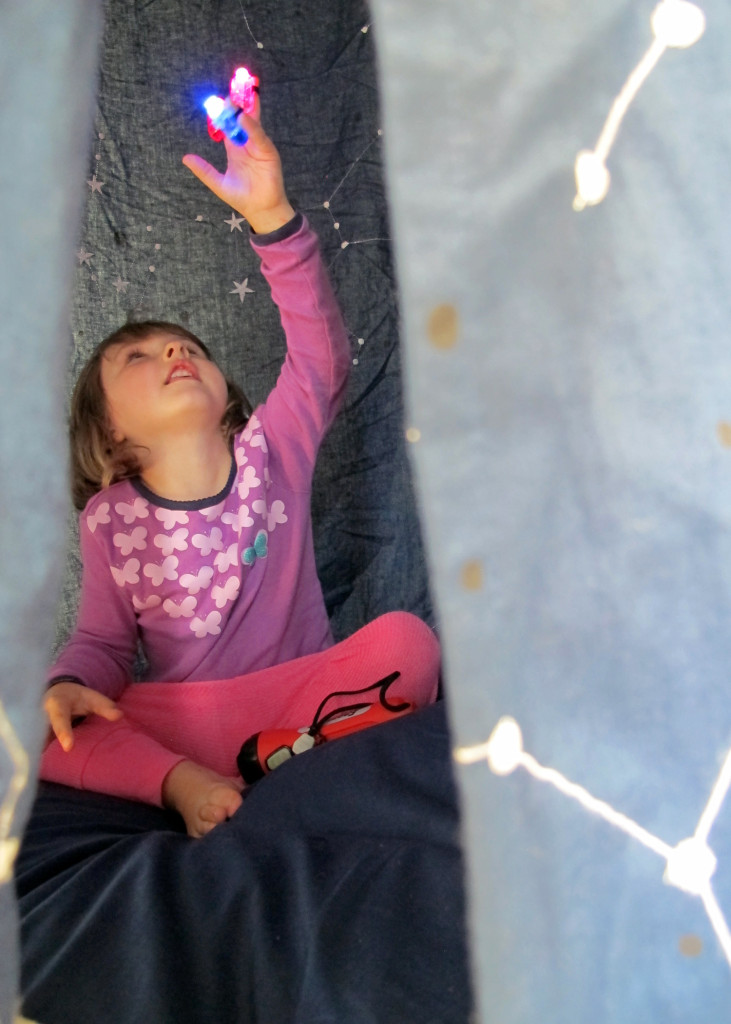
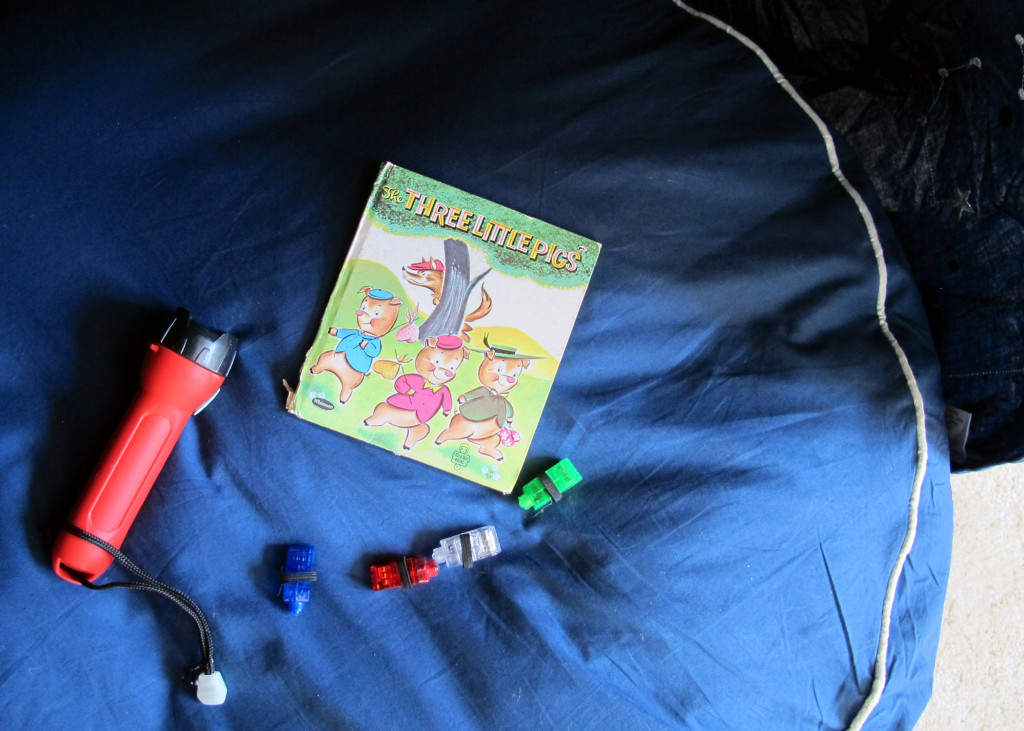
Some sensory friendly playrooms use really bright, vivid colors. But I believe if the room is a place to visually relax a soft blue or green is the way to go. I added a faux wood plank wall for texture, and the star bright decals add so much character to the room.
Our two kids are 5 and 7. They are in their elementary years so we were looking to add to hobbies they have established. They both love Legos, so it was important to include that in the room. And our daughter loves to craft and read. We keep our board games and puzzles in the closets and extra books and craft supplies in the thrifted cabinet to prevent visual over-stimulation. Additionally, we chose to leave “white space” in the room for the kids to be creative and spread out their toys.
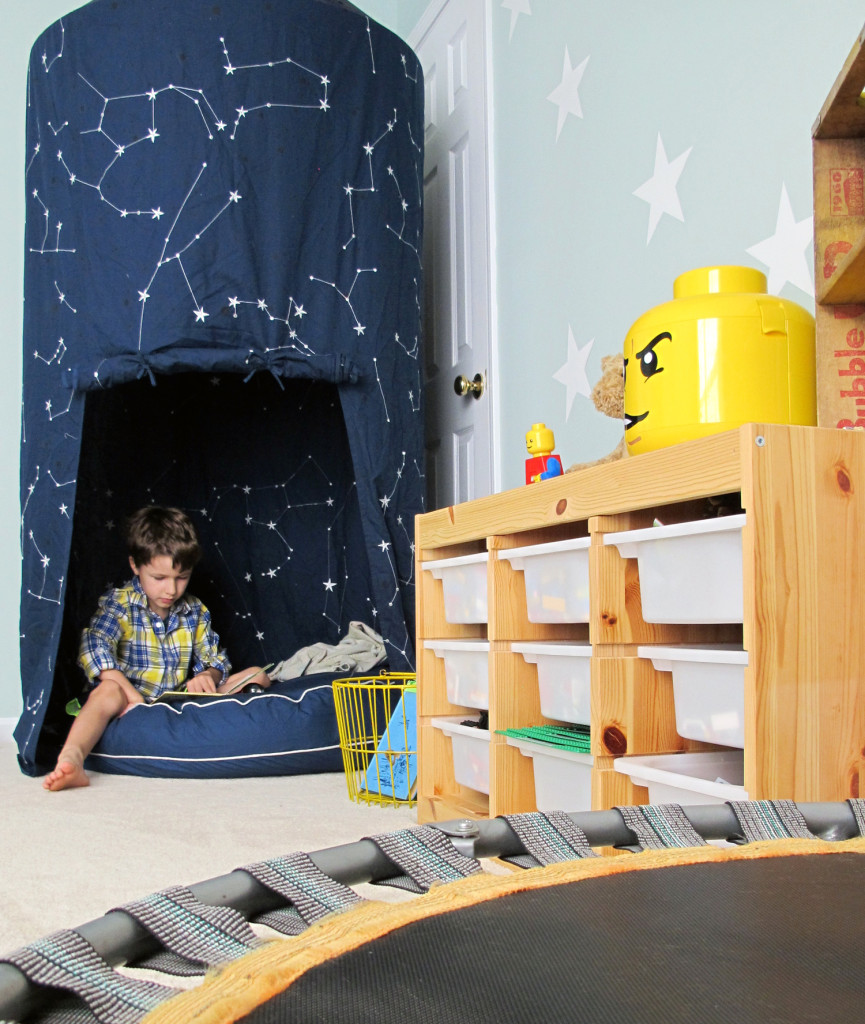
I brought the trampoline from our porch and right away our son started jumping. Jumping, hopping, running, spinning are all forms of vestibular input and is really helpful to add in a playroom for sensory processing.
Bryce craves a daily routine. It makes a tremendous difference to his day when he knows the “plan.” That can be a little hard sometimes for me: a creative, go with the flow Mama! So I added our weekly calendar to the wall and a white board for him to draw out our daily schedule. We find that reward charts (check out my free printable) and visual timers are also helpful.

The kids LOVE the new playroom. They are spending more time there, making it messy, and using their imaginations. We are excited to spend even more time there this summer! For more pictures of the playroom makeover visit Julia’s blog Tag & Tibby.
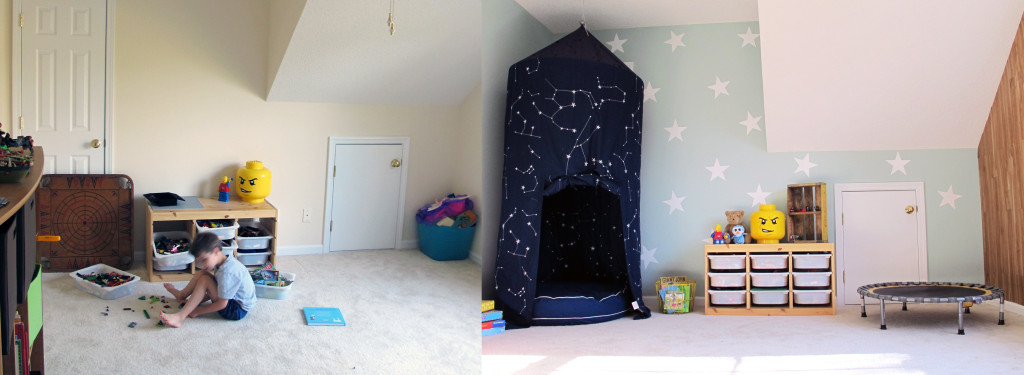
Julia is the founder and editor of Tag&Tibby: a site dedicated to simple DIY projects, home design, and recipes with a hint of vintage. She is a wife and mom to two awesome kids and has a background in product design.